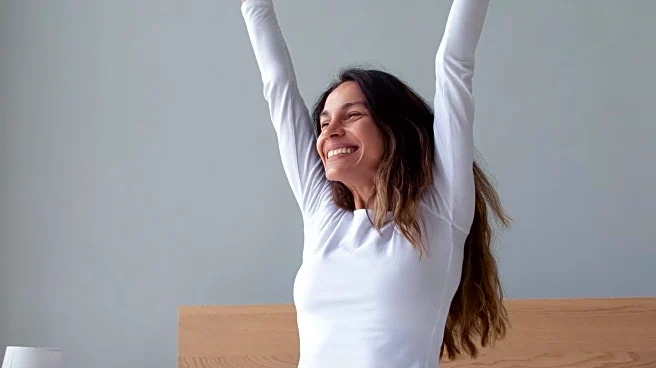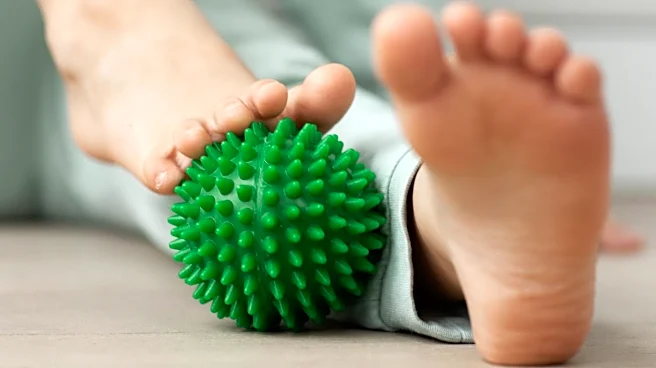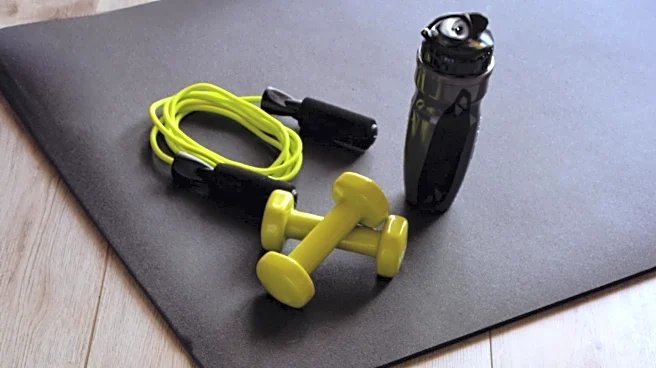What's Happening?
Trish Vroom, a 45-year-old woman from Western Canada, has discovered a simple yet effective way to enhance her happiness, mental clarity, and energy levels by jumping up and down 50 times a day. Inspired
by an online video, Vroom began her 'jumping journey' on September 19, and has since experienced significant improvements in her mood, focus, and physical health. She reports feeling happier, more energetic, and has noticed physical changes such as weight loss and improved skin appearance. Vroom's routine, combined with better meal planning, has brought new focus to her wellbeing, transforming her approach to daily challenges.
Why It's Important?
Vroom's experience highlights the potential benefits of incorporating simple physical activities into daily routines. Her story underscores the importance of finding accessible ways to improve mental and physical health, which can be particularly valuable for individuals seeking low-cost, easy-to-implement wellness strategies. The positive impact on Vroom's stress management and overall mood suggests that small lifestyle changes can have significant effects on personal wellbeing. This trend may encourage others to explore similar habits, potentially leading to broader societal shifts towards more active and health-conscious lifestyles.
What's Next?
Vroom plans to expand her platform by sharing her 'jumping journey' online, attracting followers interested in her routine. She aims to create short, accessible exercises called 'snacker-sizes' for people to incorporate into their daily lives, and is designing a course for mothers with pelvic floor issues who may not be able to jump comfortably. Her efforts to promote simple, joyful activities could inspire more individuals to adopt similar habits, fostering a community focused on personal development and wellness.
Beyond the Headlines
The ethical dimension of Vroom's story lies in the promotion of self-care and mental health awareness. By sharing her journey, Vroom contributes to a culture that values personal wellbeing and encourages individuals to take proactive steps towards improving their health. Her approach challenges the notion that significant health improvements require complex or expensive interventions, advocating instead for simple, sustainable practices that can be integrated into everyday life.











